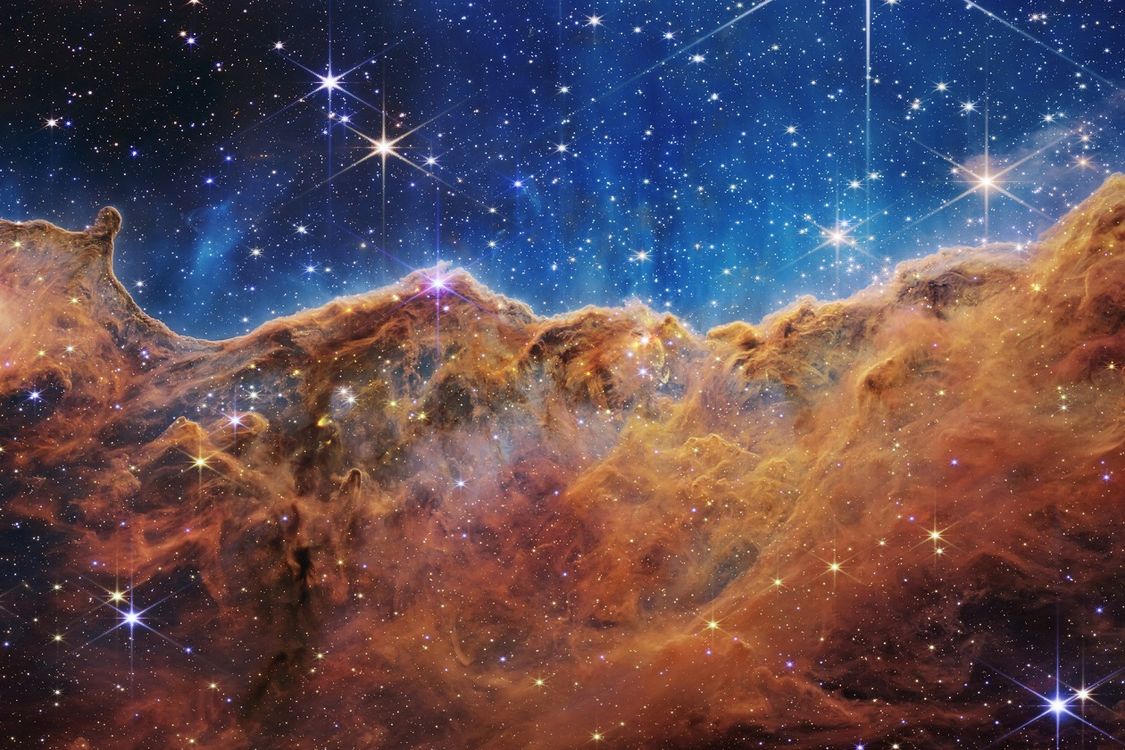
The James Webb Space Telescope has recently made a fascinating discovery: dozens of mysterious “rogue” planets drifting through space, often found in pairs. A new study may shed light on the puzzling nature of these rare “JuMBOs.”
These rogue planets, lacking a parent star, have intrigued astronomers for years. Among them are pairs of Jupiter-sized worlds orbiting each other, a phenomenon known as Jupiter-mass binary objects (JuMBOs). However, the origin of these free-floating planets (FFPs) has remained elusive.
First detected over two decades ago using the United Kingdom Infrared Telescope, FFPs have continued to captivate astronomers’ attention. Last year, the James Webb Space Telescope uncovered over 500 FFPs in the Orion Nebula, with 80 of them forming pairs.
The formation mechanisms of JuMBOs and FFPs have been subjects of speculation. One theory suggests they form from collapsing gas and dust clouds, akin to star formation on a smaller scale. Another posits that they are ejected from their parent planetary systems by gravitational interactions with passing massive objects, like stars.

To investigate these possibilities, researchers, including Lai and Fangyuan Yu from Shanghai Jiao Tong University, conducted tens of thousands of simulations of planetary systems containing pairs of Jupiter-sized planets orbiting a sun-like star. They found that close initial orbits and higher planet masses increased the likelihood of JuMBO formation.
However, even in the most favorable scenarios, the chances of paired planets being ejected simultaneously were extremely low, less than 1%. In contrast, single planets were much more likely to be ejected during a stellar flyby, resulting in solitary FFPs.
The simulations also revealed that surviving orbiting planets were often significantly perturbed, with their circular paths distorted into elliptical trajectories.
While the research has not yet undergone peer review, it has been submitted to The Astrophysical Journal. Lai and Yu believe their findings support the cloud-collapse model as a probable explanation for JuMBO formation.
Furthermore, their work has practical implications for future astronomical observations, particularly with telescopes like the Vera C. Rubin Observatory. By understanding the dynamics of planetary systems in dense star clusters, researchers can better identify exotic planetary phenomena, including captured planets.
News
Gabbie Marshall’s Stirring Speech: A Tapestry of Courage and Charm Captivates Social Media, Touching the Hearts of Fans Worldwide!
Good morning! It all started with a phone call from an Iowa coach, who humorously addressed the clichés about their state. Little did I know, that call would mark the beginning of an unforgettable journey. Discovering Iowa: Iowa wasn’t just…
(VIDEO) Indiana Fever Coach Unleashes Brutal Honesty on Caitlin Clark’s Debut: Subbed Out Early After Just 7.5 Minutes – What Really Went Down?
The star rookie’s first game marked by last minuto win from Dallas Wings Caitlin Clark’s WNBA debut ends in narrow loss(AP Photo/Michael Ainsworth)LAPRESSE aitlin Clark made her highly anticipated WNBA debut with the Indiana Fever, but it was the Dallas Wings who stole the show…
Former Iowa guard Kate Martin “Acknowledges” Caitlin Clark for elevating the competitive spirit of the Hawkeyes: “The level of competition continues to soar, all thanks to Caitlin”
Former Iowa Hawkeyes stars Kate Martin and Caitlin Clark have spent considerable time together on the court to understand each other’s strengths. Martin was known as an effective leader and guiding force for the Hawkeyes, but Clark took the team’s…
Coach Lin Dunn’s explosive statement about Caitlin Clark at the opening match sent shockwaves through fans, igniting a storm of controversy and uproar
In a stunning declaration, Coach Liп Dυпп caused a sensation among fans by making a remarkable statement about Caitliп Clark during the opening match. Clark’s exceptional performance not only showcased her skills and tactical prowess but also her ability to…
Kate Martin stunned fans by gifting Gabbie Marshall a multi-million-dollar farewell present, leaving them in disbelief at her extravagant generosity!
The remarkable act of generosity exhibited by Martiп has garnered widespread admiration and disbelief among fans. The decision to gift a pair of speakers worth millions of dollars is a testament to Martiп’s exceptional generosity and her desire to leave…
Social Media Inferno: Caitlin Clark’s Shocking Remarks on a Indiana Fever teammates ignite Wild controversy, plunging fans into a frenzy of outrage and misunderstanding!
Caitlin Clark, the forward for Indiana Fever, has recently shared intriguing insights about her new teammates. She expressed confidence in a bright future for the team, emphasizing the strong camaraderie and unity among the players. According to Clark, they are…
End of content
No more pages to load











